-
Before starting school, a 4-year-old should ideally possess foundational language skills, including the ability to express themselves with simple sentences, understand basic vocabulary, and follow simple instructions.
-
They should exhibit pre-reading skills such as recognizing some letters of the alphabet, understanding letter sounds, and showing an interest in books and storytelling.
-
Pre-writing skills are important, including holding a pencil or crayon with a proper grip, attempting to write letters, and developing hand-eye coordination through drawing and coloring.
-
Numeracy skills should include counting up to at least 10, recognizing basic shapes, understanding simple concepts of size and quantity, and beginning to grasp basic mathematical concepts.
-
Socially and emotionally, they should be able to interact with peers and adults cooperatively, express needs and wants verbally, and manage emotions appropriately.
-
Developing physical skills like gross motor skills (running, jumping) and fine motor skills (using scissors, manipulating small objects) is crucial.
-
Independence skills such as dressing themselves (with assistance), using the restroom independently, and following simple routines are also important for school readiness.
Making sure that your child is prepared for kindergarten is something that you want to do. In this day and age, what does it mean to be “Prepared for kindergarten?” There is a common misconception that kindergarten is the new first grade and that therefore, you must teach your child to read before they begin school. This is not compulsory.
Each child has a different set of skills
In reviewing how you can prepare your child for kindergarten; you should keep in mind that kindergarten teachers understand that children differ a lot when they enter kindergarten. Therefore, kindergarten classes are designed to meet a wide range of children’s needs.
To begin with, let’s look at the basic milestones for a 4-year-old child. Then we shall look at ways to improve their skills. By the end of this article, we will discuss how many letters a 4-year-old should know. If you have a child aged four and under, this article will greatly benefit you.
4 Year Old Milestones
Milestones That Your Child Should Achieve by The Age of Four
Tracking 4-year-old milestones can provide valuable insights into your child’s development, as you observe how he or she plays, learns, speaks, acts, and moves. By the time children reach this age, they can usually do certain things.
Don’t miss: What do children learn in nursery?
What Should a 4 Year Old Know Academically
Social and emotional development
- Likes to try new things
- Role-plays as “Mum” and “Dad”
- Are becoming more creative with their pretend play
- Plays cooperatively with other children. They may now prefer this over independent play.
- May often find it difficult to differentiate between real and unreal
- Talks about his/her interests.
Communication/Language
- They have a basic understanding of grammatic rules, such as correctly using “he” and “she” pronouns.
- They are able to sing a song or to recite a poem from memory, for example, the “Itsy Bitsy Spider” or the “Wheels on the Bus.”
- Narrates stories
- Knows their first and last name
You might be interested in this article as well: The Importance of Communication and Language Development in Kids
Cognitive (learning, thinking, problem-solving)
- The names of some colours and numbers
- Knows how to count 1-20
- Begins to understand the concept of time
- Are able to tell a story in parts
- Understands what the words “same” and “different” mean
- Are able to create a drawing of a person with 2-4 body parts
- Cuts with scissors
- Copies some letters by hand
- Enjoys playing board or card games
- They are able to predict what will happen next when reading a book
The Development of Movement/Physical Ability
- Are able to hop for up to 2 seconds and stand on one foot
- Are able to catch balls the majority of the time
- Prepares food/drinks by pouring, cutting, and mashing them with supervision
Consult your child’s doctor as soon as possible if they have any of the following issues:
- Cannot jump in place
- Has trouble scribbling
- Are not interested in interactive games or make-believe games
- If they do not respond to people outside of the family or ignore other children
- Refuses to dress, sleep, and use the toilet
- Unable to tell a favourite story again
- Does not follow three-part commands
- Are unable to distinguish between “same” and “different”
- Uses “me” and “you” incorrectly
- If they speak unclearly
- If they have lost some of their former skills
While some children will have just turned five, others will be approaching the age of six. It’s important to understand that some will be able to read short words whilst others may only recognise just a few letters of the alphabet. Every child progresses and develops at their own pace.
Looking for the best Dubai nurseries? The best thing you can do is visit them. Visit our nursery in Dubai by booking a tour.
Math, Writing & Reading Skills for Four-Year-Olds
7 Math Activities
Below are suggested teaching activities to use to introduce your pre-kindergartener key math concepts.
- Count to 20 – By practicing and helping your child to memorise the words one, two, three…
- Learn how to count objects up to ten – Count toys up to ten. Set out a group of objects (keep it below 10) and ask your child to count them. If your child isn’t ready to count, ask them to do so with you.
- Demonstrate skip counting by twos if your child has mastered counting to 20 verbally – Line up ten pairs of shoes to demonstrate. To begin, count each shoe one by one, then do it again, skipping two with each pair. It is not necessary that your child masters this idea; you are just introducing it to them.
- Distinguish between flat and solid shapes – For example, a ball is a round solid shape whereas a paper circle is flat. Regularly mention shapes in your day-to-day life. For example, when eating pizza, point out to your child that it is in the shape of a circle. This doesn’t need to be memorised. Just introduce the concept to your child.
- Discuss different measurements with your child and show them how objects can be measured by weight – To demonstrate, you could weigh yourself and then your child on a scale. You can also explain measurement by showing your child a ruler and explaining to them that things can be measured by their length. You can also begin to explain to your child that time is measured by the numbers on a clock. You are only illustrating that numbers can be used for different types of measuring at this point and not explaining how to measure.
- It is possible to reach bigger numbers with smaller numbers – For instance, if you have five toys, count them up to five. Then divide the toys into two and three, count two and three, then put them together and count to five. Show this to your child just to get the ball rolling. You don’t need to worry about whether or not your child can fully comprehend it yet.
- Talk to your child using position words – Bring their attention to the opposite, i.e., in front of, behind, above, next to and besides.
Related article: Top surprising math benefits for toddlers
Reading Standards
At nursery in Dubai, a child will be developing the following reading skills:
- Reading single-syllable words
- A page should be read from top to bottom and left to right.
- Short and long vowel sounds
- Words are separated by spaces, and written letters and language are representations of spoken words
- The full uppercase and lowercase alphabet and the sounds each letter makes
- A story’s main characters, setting, and events must be identified
- The ability to read and understand leveled readers, i.e., phonics readers.
- Recognition of common types of texts, like storybooks and poems
- A book’s title, author, illustrator, and front, back, and title page should be recognised.
- That a story can be understood better by understanding how the illustrations support the text.
The 5 Best Reading Activities
Parents today are aware of the importance of reading to their children frequently in order to develop good pre-reading skills. Here are a few ideas to introduce kindergarten reading concepts to your child:
- Make sure you read your child a wide variety of books – Tell them stories, read them rhymes and poetry and give them non-fiction books that contain animal or natural facts. Do not overwhelm yourself or your child with these, spread them out over time.
- You can help your child recognise the patterns of language by teaching him or her nursery rhymes and children’s songs – If they are able to hum the tune of the rhyme, you can ask them what words rhyme.
- Make sure that your child can recognise at least ten letters – It is best to start with the letters of your child’s first name, as these will be of great interest to your child. In addition to using letters from their name, you can also use the names of your pets, favourite items, or foods. This will help your child to relate to the letters. Something they find interesting. To teach your child the letter, you can have them look for it on signs or other items around the house. You can also get magnetic letters or an alphabet puzzle and place the letters you need in a bag. Randomly draw out letters to see how many your child knows.
- The alphabet song is a good way to teach your child – Using a tune will help your child remember the names of all letters. The Tinkle, Twinkle, Little Star tune was a favourite among many of today’s parents. Kids may also enjoy learning the alphabet through a children’s show if it’s a show they enjoy watching.
- As you read a book, point out some of the basic rules of reading – For example, you should read the book front to back. Whenever you read out loud, you can also trace under the words and explain that the letters and words on the page represent the words you are reading out loud, so you read them in the order on the page. As a silly exercise, read the words on the page in reverse order or randomly, to demonstrate that the sentences are meaningless when not read from left to right. You can just show this to your child to pique their curiosity.
-
Understands the idea of what a word is in print — and that words and sentences are read from left to right
-
Holds a book correctly and turns pages front to back
-
Has memorized some favorite books and can recite them along with you
-
Knows some upper- and lowercase letters, and understands that letters stand for sounds (“B makes the buh sound”)
-
Can recognize his name and some familiar words on signs (such as “stop”)
-
Can identify whether or not two words rhyme, or whether they start with the same sound scholastic.com
Writing Standards
Kindergarteners typically learn the following writing skills:
- To describe familiar places, people, and settings.
- To learn how to use digital tools to create and publish writing with the help of an adult.
- To spell words with one syllable.
- Understanding what a question is and that who, what, when, where, why, and how are question words.
- Explain your child’s understanding of a story or text by drawing, speaking, or writing.
- Write, draw, or speak to explain events, such as what they did over the weekend or at an event.
- Nouns, verbs, and prepositions should be used correctly.
- Support children as they draw, speak and write about a story or event.
- Use drawing, speaking, or writing to explain an event or answer questions in a group.
- Complete the alphabet in both uppercase and lowercase letters.
The 5 Best Writing Activities
The pre-K stage is characterised by a great deal of overlap between reading and writing skills. The reading activities above directly support pre-K writing abilities. Below are some ideas for preparing your child to write in kindergarten:
- You can encourage your child to colour and draw pictures – This will prepare them to use drawings to tell stories if they are familiar with writing tools and know how to draw even simple images.
- Allow your child to use a few digital tools before school – By playing games on a tablet or cell phone, your child will become familiar with digital media, preparing them for the new standard of producing and publishing writing using digital media.
- Spend lots of time talking to your child – Get them to think about their answers by asking a variety of questions. “What are your favourite books, colours, clothes, or animals?” Ask them how they feel and what caused them to feel the way that they do. If they don’t seem to know how to express themselves, feel free to offer some suggestions. In addition to giving them foundational writing skills, this can also strengthen your relationship with your child.
- Discussing books – You can extend the above to books that you have read to your child by asking them what happened in the story. Ask specific questions about familiar things that have an order to them, like “What did you do today?” and “What did you do on your play date with your friend?“.
- Teach your children to write their name – This can be done in several ways. After your child has mastered writing his or her name, they will be able to write it on all of their school assignments. Writing one’s own name is a skill that many children are very proud of and enjoy practicing. A good way to teach this is to sit down with your child and each of you having a very wide sheet of lined paper. Slowly write each letter and ask your child to copy it. Start with a few If you need to explain each letter, show them the stroke several times.
These activities should all be part of their playing time. Make sure that they don’t get bored. Make sure that they enjoy learning and discovering new things.
What is the ideal age for children to learn the alphabet?
Children naturally hit learning milestones as they grow. Learning the alphabet is a crucial educational milestone for a child, as it prepares them to read and write. How old should a child be to know the alphabet? Our article will teach you how old your child should be when it comes to how to recite the alphabet, recognise and write letters, learn letter sounds, and ultimately learn to read. Read it to find out!
What Should a 4 Year Old Know?
Is it important for a child to know the alphabet at a young age?
Recite the alphabet
By the age of three, a child should be able to recite the alphabet. This may not be the case for all children. A toddler might pick it up as early as their twos, while others might not pick it up until their late threes. The alphabet is generally learned through repetition. Singing the ABC song often will help your kids learn it faster, just as they would learn any song.
Recognition
By the age of three or four, most children can recognize letters – They tend to recognise the letters in their own name first. Similarly, a girl named Sarah should be able to recognise the letter “S” and most of the other letters in her name as well. Teach your children about recognising individual letters by repetition, similar to alphabet recitation. You might ask them, “What letter do you see here?” whenever you see a single letter.
Writing
Children will begin writing letters by the age of four or five – Preschoolers and kindergarteners learn to write the alphabet, but it may be beneficial for your child to practice writing the letters at home. Written symbols represent messages to children of this age, and they may be interested in writing on their own. Children can easily learn how to write letters by tracing them. In addition, learning how to write your child’s name is an important step to ensuring that they become familiar with how to write the rest of the alphabet.
Sounds
Five-year-olds will start associating letters with sounds, also known as phonics – For example, children should be able to understand that the word “book” begins with the letter B around the age of five. Children learn phonics in kindergarten, which is a vital step to decoding written text and learning to read as one of the child development skills.
Reading
In the first grade, young children should be able to read words aloud confidently by six years of age – They should also be able to recognise sight words and their names. Additionally, some words can be decoded by sounding out their letter combinations.
Children should be able to sound out a simple book by the second grade. As early as third grade, your child should be able to read independently and fluently. This is the time when your child should be familiar with the alphabet and ready to learn how to read!
Watch the introduction video for The Little Dreamers Nursery.
The Little Dreamers Nursery, a one of the Best British nurseries in Dubai invites parents to visit and experience the warmth and magic first hand through a nursery tour, we can then support you in completing the next steps for enrolment after checking out the curriculum and enrollment as follows:
- Nursery Tour
- Application Submission
- Tuition Fee, Documentation, and Enrollment
Book a Tour Now
Check out our summer camp here!
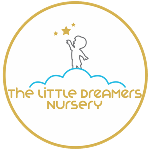
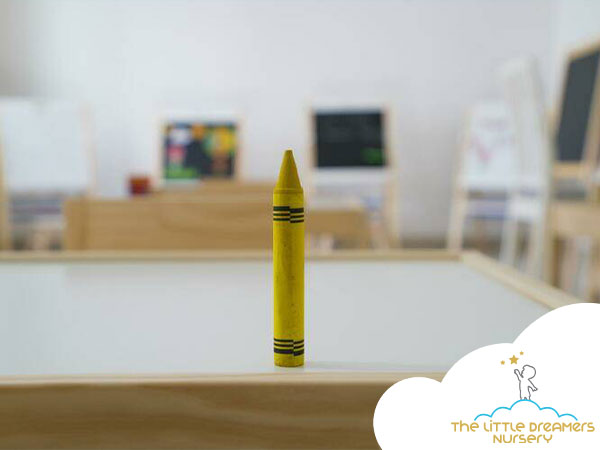
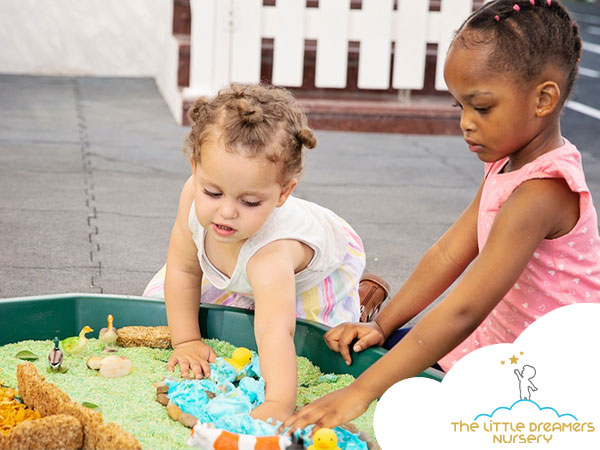
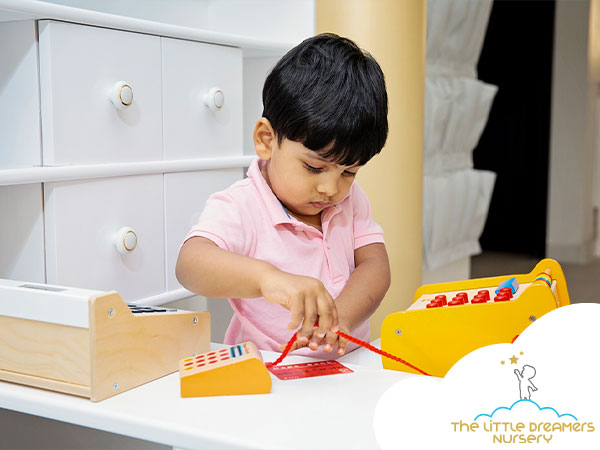

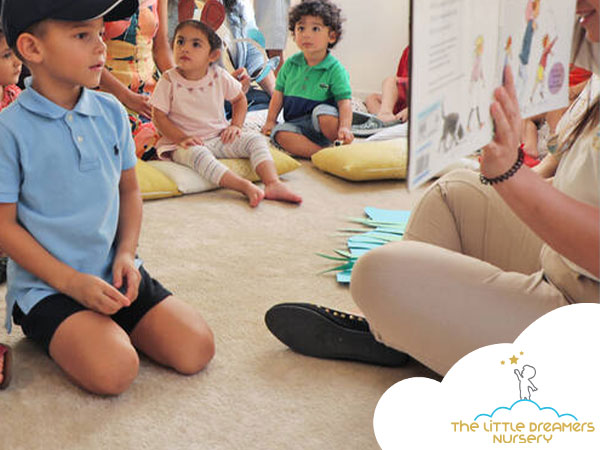
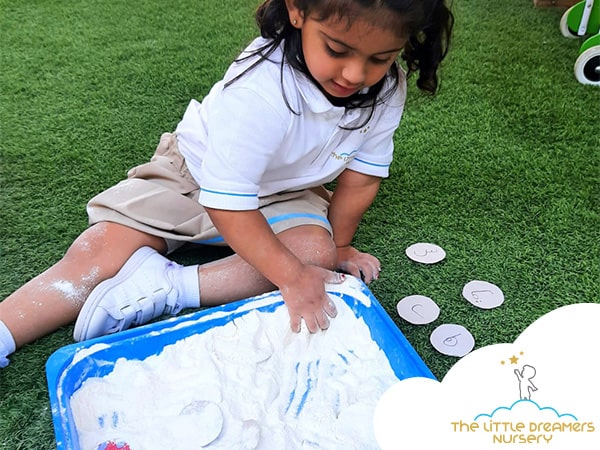







Greatest experience ever with our children learning through play and healthy life. Yea I think your way it’s working on wonderful work. Thank you very much.
I find it interesting when you said that kids can be able to recognize letters at the age of three or four, especially the letters from their own name. It seems like we have to be prepared to expose our daughter to those things before even sending her to a kindergarten school so that she will not be having a hard time learning. This is our first time raising a child which is why we want to be the best parents we can for her own benefit so these types of articles can help us a lot in giving the best life for our child.